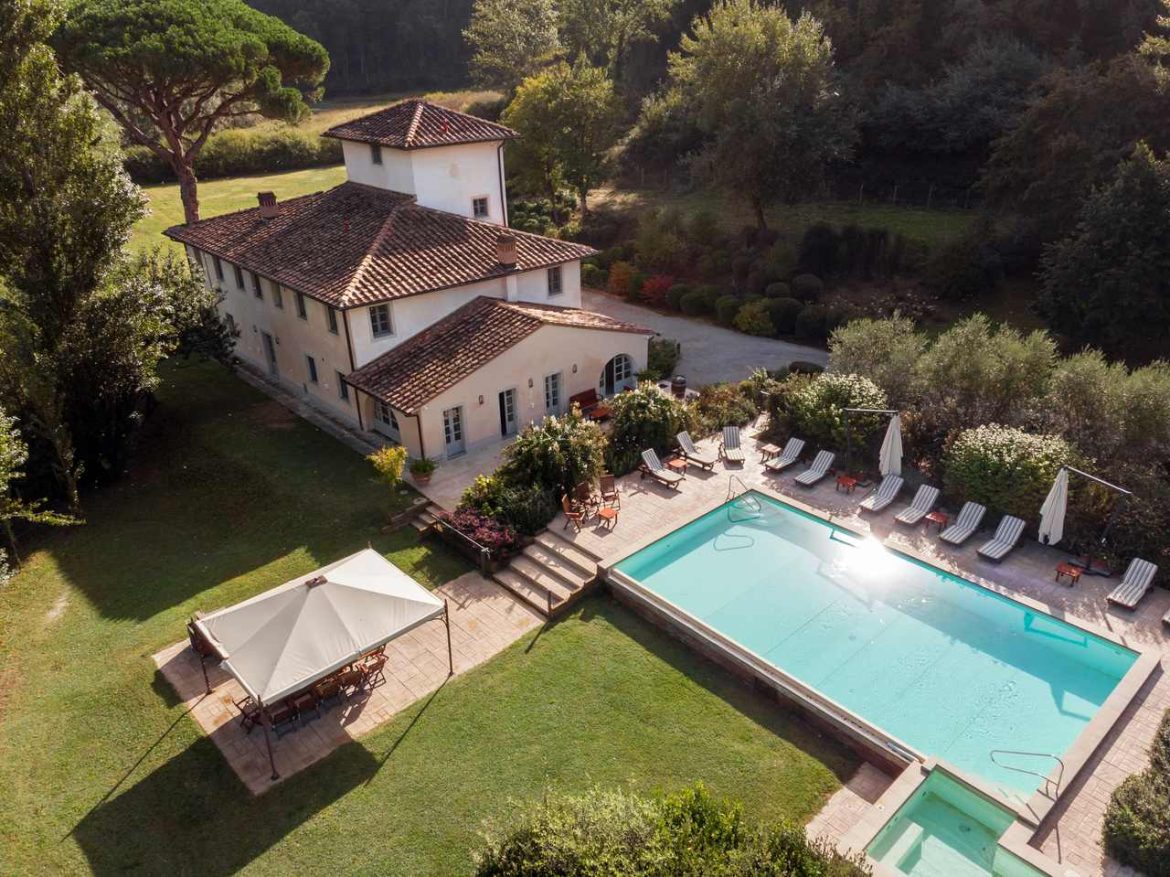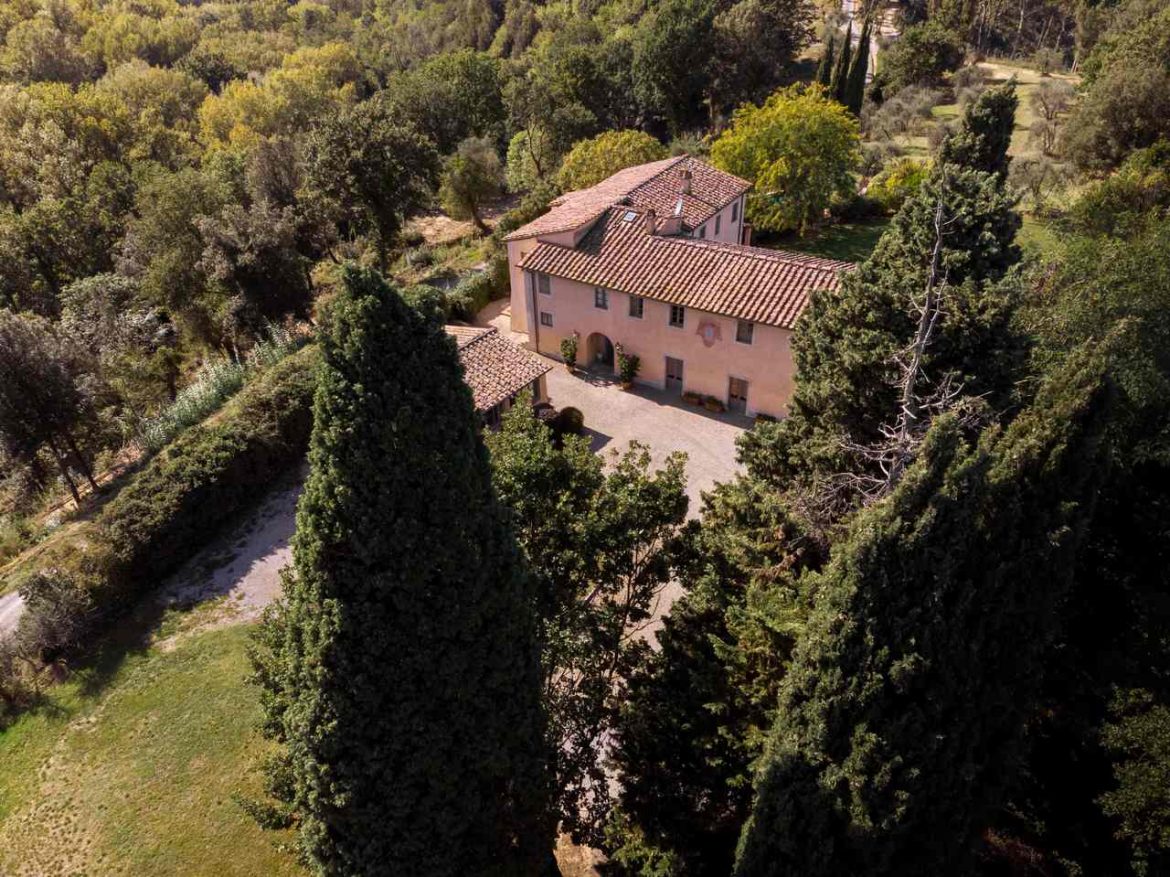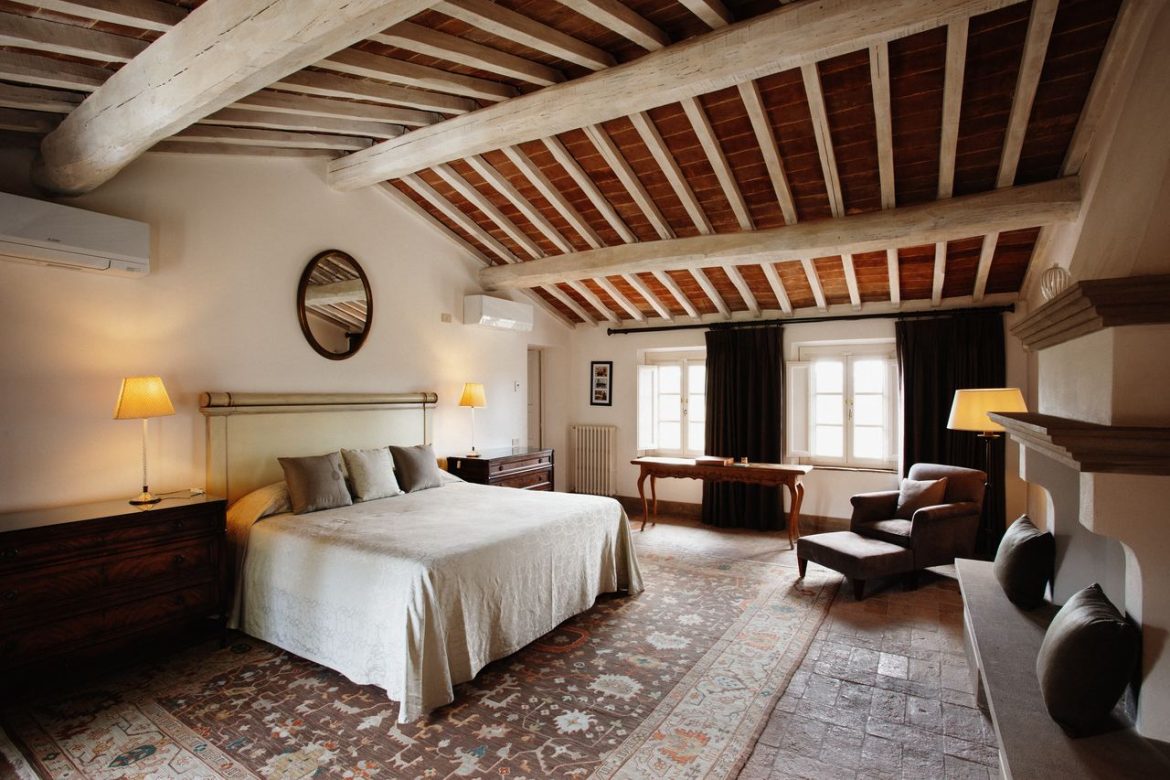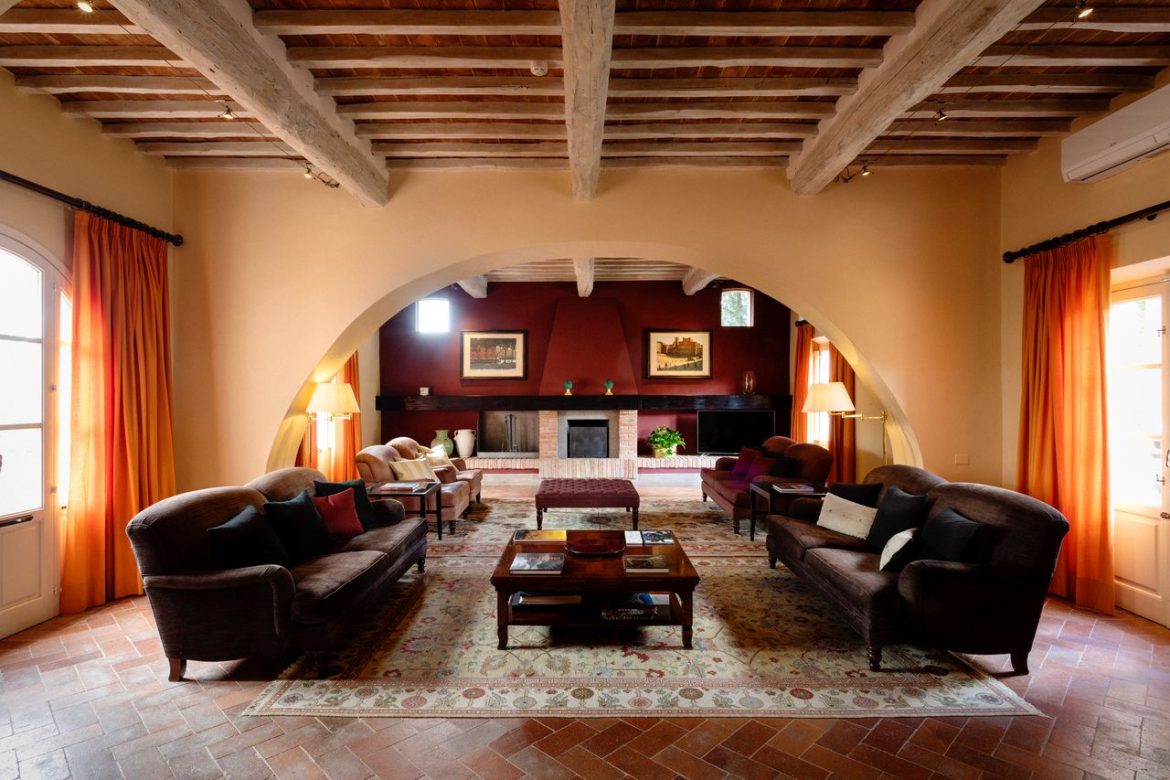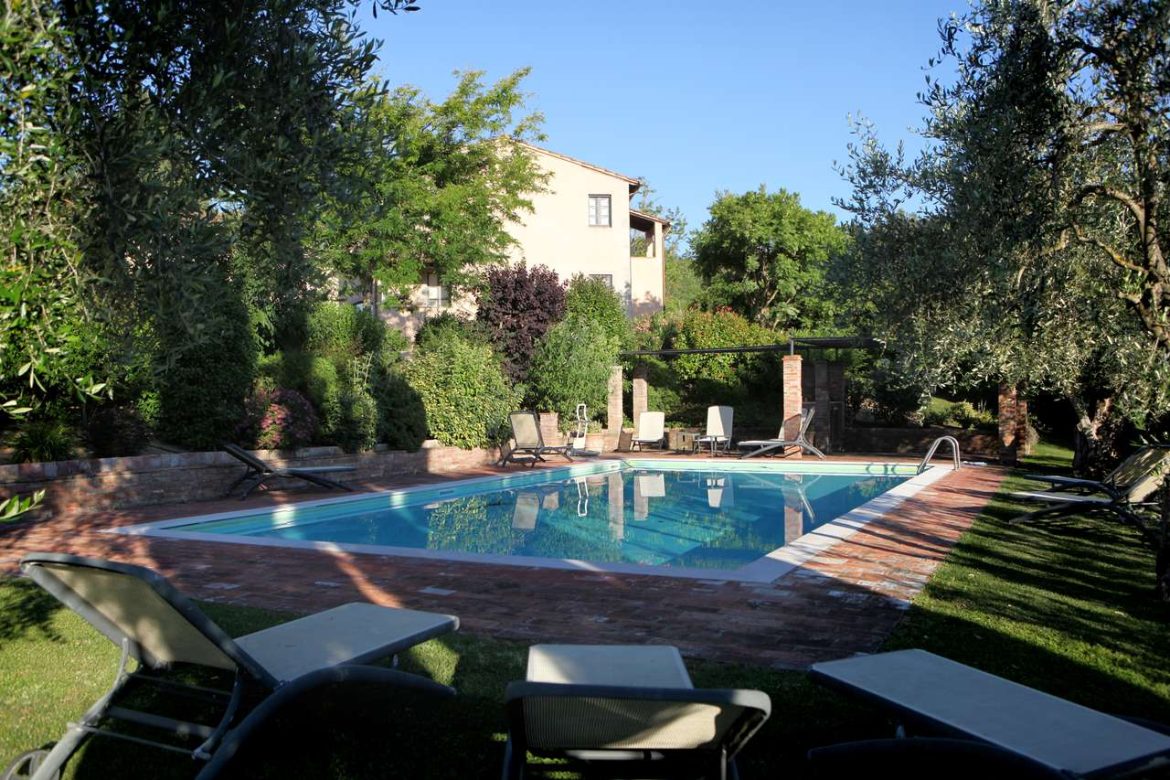Multi-millionaire financier and Italophile Guy Hands and his wife, Julia, bought the abandoned Villa Saletta estate over 20 years ago and have been bringing it back to life, reviving the wine and olive oil traditions and renovating villas for high-end holiday lets.
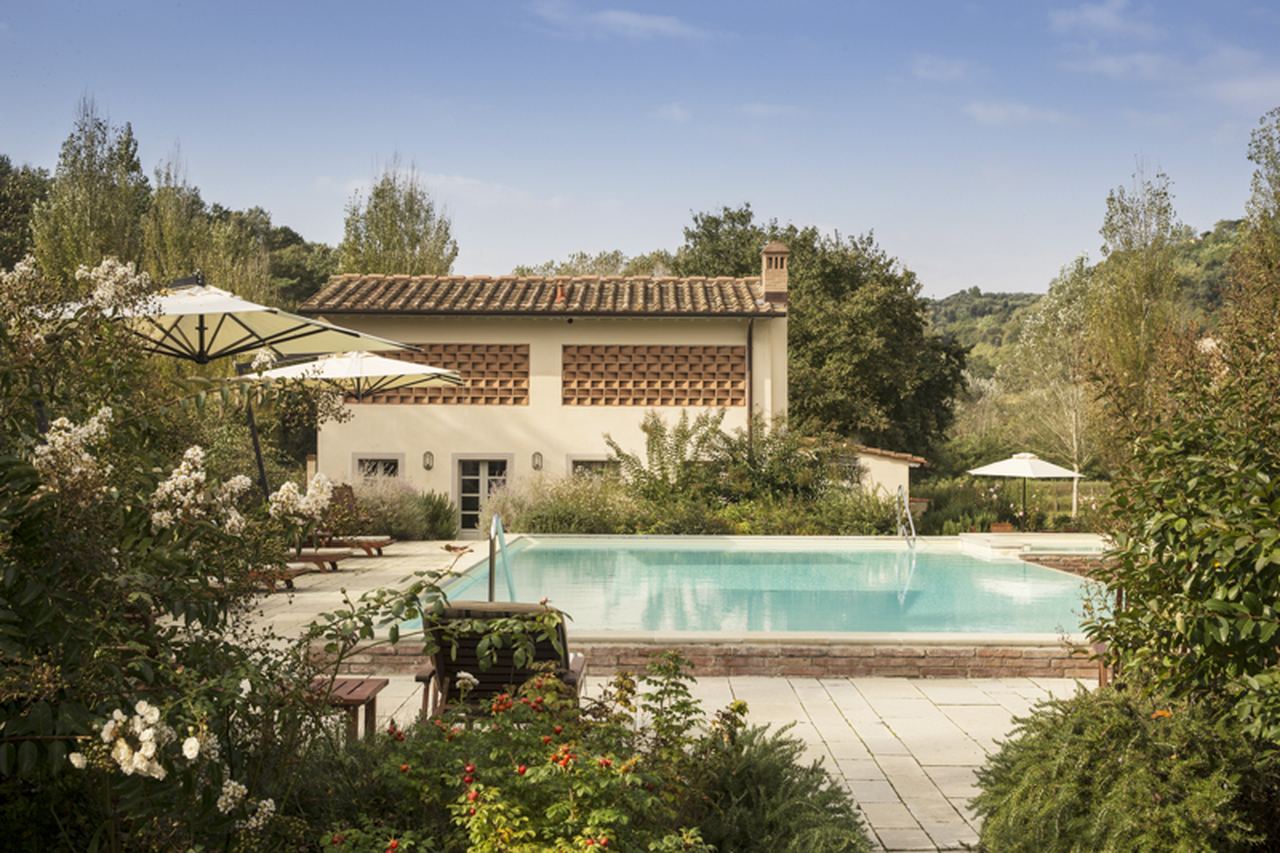
Villa Valle
Half an hour’s drive east of Pisa, the three rural retreats have their own secluded terraces and swimming pools where you can happily while away summer days. But for the more energetic there are hiking and biking in the hills, truffle-hunting in the woodlands, vineyard and winery tours and the olive harvest in autumn.
Art lovers are spoilt for choice with hilltop hamlets and historic Tuscan towns, such as San Gimignano, Volterra and Lucca, all within easy reach.
The Villas
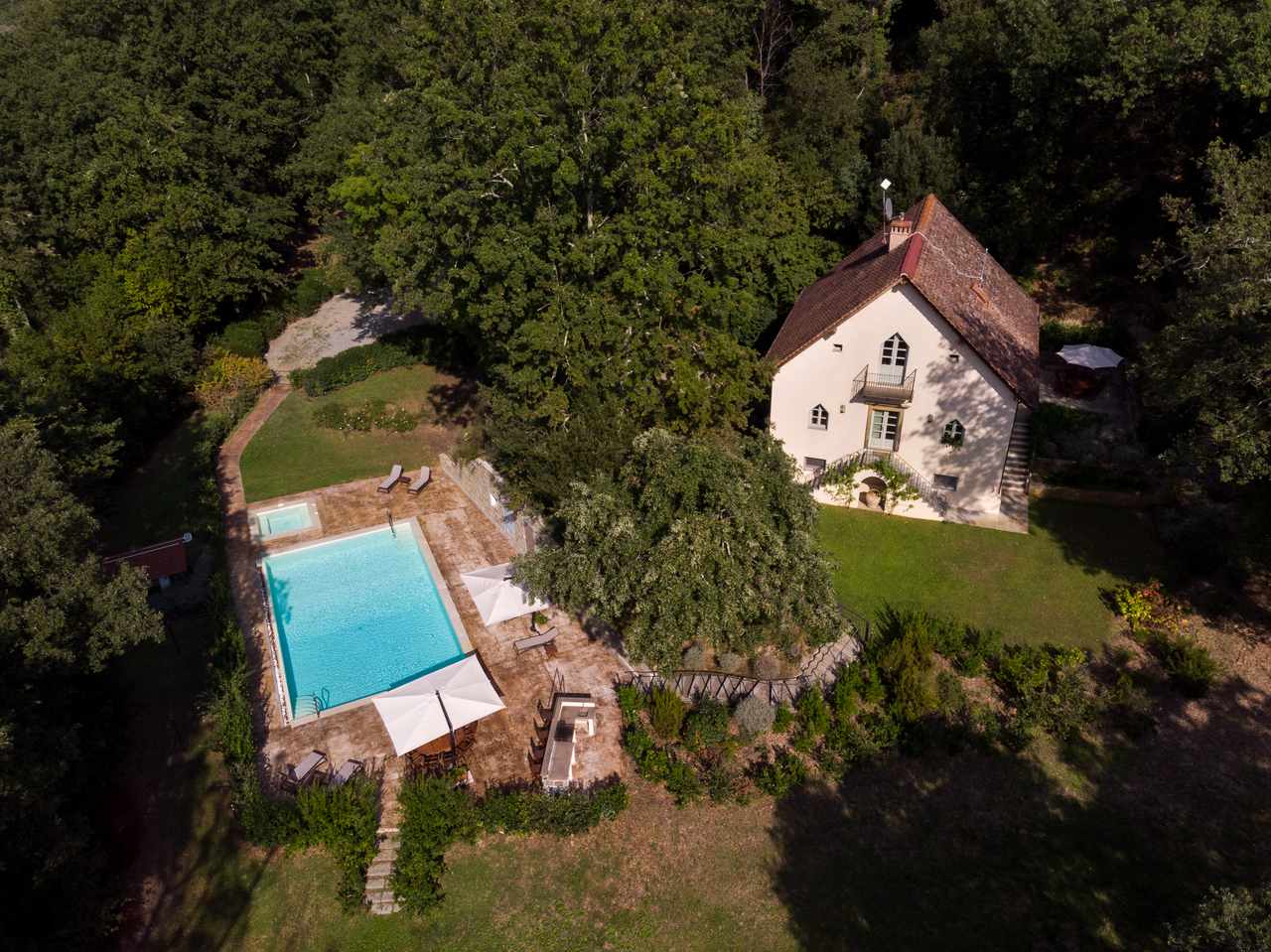
Casolare – very secluded
Preserving beamed ceilings and terracotta floors, and furnished with warm wood antiques and elegant fabrics, the villas are a combination of Tuscan rusticity and English country-house style. Bathrooms come with rain showers and/or large tubs and sleek contemporary fittings.
The two larger villas have seven rooms accommodating 14, and are ideal for family gatherings (children are welcome) or house parties. Villa Valle has a splendid large kitchen, an enviable master guest room and a converted hayloft with separate accommodations while the smaller former hunting lodge ‘Casanare’, hidden among sun-dappled woodland, makes a romantic retreat in the woods.
My favourite villa is ‘Fagnana’, with its spacious terrace looking across towards distant hills, an alluring pool and sitting room with deep-seated sofas and a crackling fire. Guests are welcomed with a hamper of home produce including Villa Saletta’s award-winning wines, olive oil and honey. There are fresh provisions to tide you over, a tiny box of artisan chocolates beside your bed and a lavish, beautifully-illustrated book on the story of the estate.
An Illustrious Past
The name of Villa Saletta’s most exclusive wine, 980 AD, refers to the first written record of the estate, with a reference to its wine production. Ancient aristocratic clans who lived here included the Riccardi family from Florence who were bankers to the House of Medici. In the 16th and 17th centuries, they transformed the domain into a flourishing and profitable working estate, where nobles and workers lived side by side in the medieval borgo (village).
The village today is a charming but faded cluster of buildings, with peeling pink, red and ochre facades. Prominent are the clock tower, church, Riccardi chapel, a loggia with fine views and a frescoed Palazzo where the Riccardis lived and entertained in style. Every building in the borgo is now abandoned – except for one house where a woman lives with her cats.
It was in 2000 that Guy and Julia Hands bought Villa Saletta and saw the potential to rekindle the tradition of an agriculturally diverse, sympathetically-managed and self-sufficient estate. Their plans for the borgo are ‘a luxurious hospitality experience, with authenticity and history at its heart.’
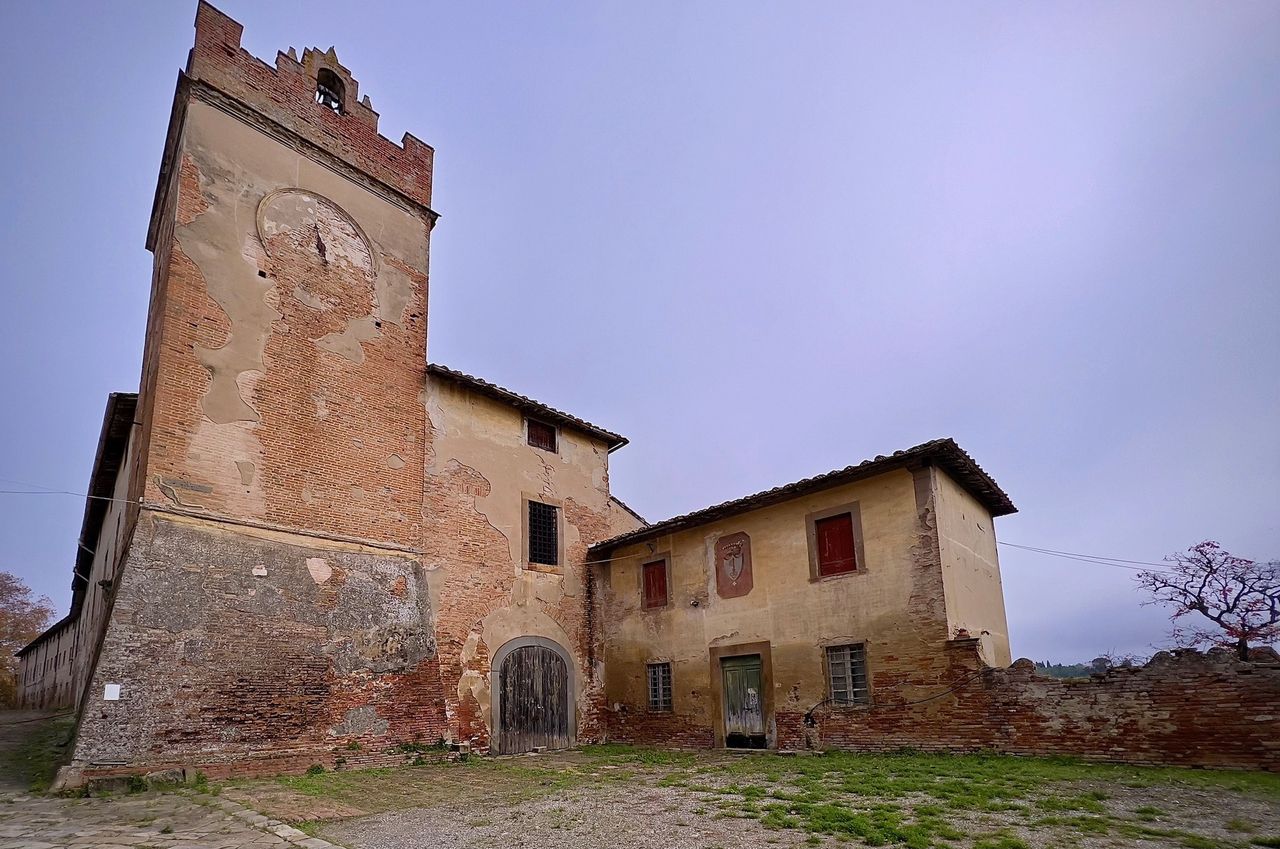
Clock tower of the Borgo Photo Piers Golden
Wine making and Wine-tasting
Since 2016 the head winemaker has been the affable David Landini, who has been experimenting with different blends of grapes, in collaboration with Bordeaux-based advisers, and overseeing the construction of a smart new cantina.
Landini was blown away by Hand’s personal cellar at his UK home, and agreed to become involved in the exciting new vision for Villa Saletta’s vineyards. Alongside the classic Tuscan variety of Sangiovese, he has established a range of grape varieties, including Cabernet Sauvignon, Cabernet Franc and Merlot, all perfectly suited to the terroir.
Landini shows us around the modern cantina, explaining the meticulous hand-selection of grapes, the fermentation in stainless steel tanks, the ageing processes in French (and some Slovenian) oak barrels.
Then comes the much-anticipated wine tasting. We go from the refreshing, Provencal-like Spumante Rosé, through high quality Chiantis, to the deep spicy Chiave di Saletta 2018 and finally the estate’s flagship wine: Giulia 19, named after Giulia Riccardi who conveniently has the same name as Guy Hands’ wife, Julia. We toast to both.
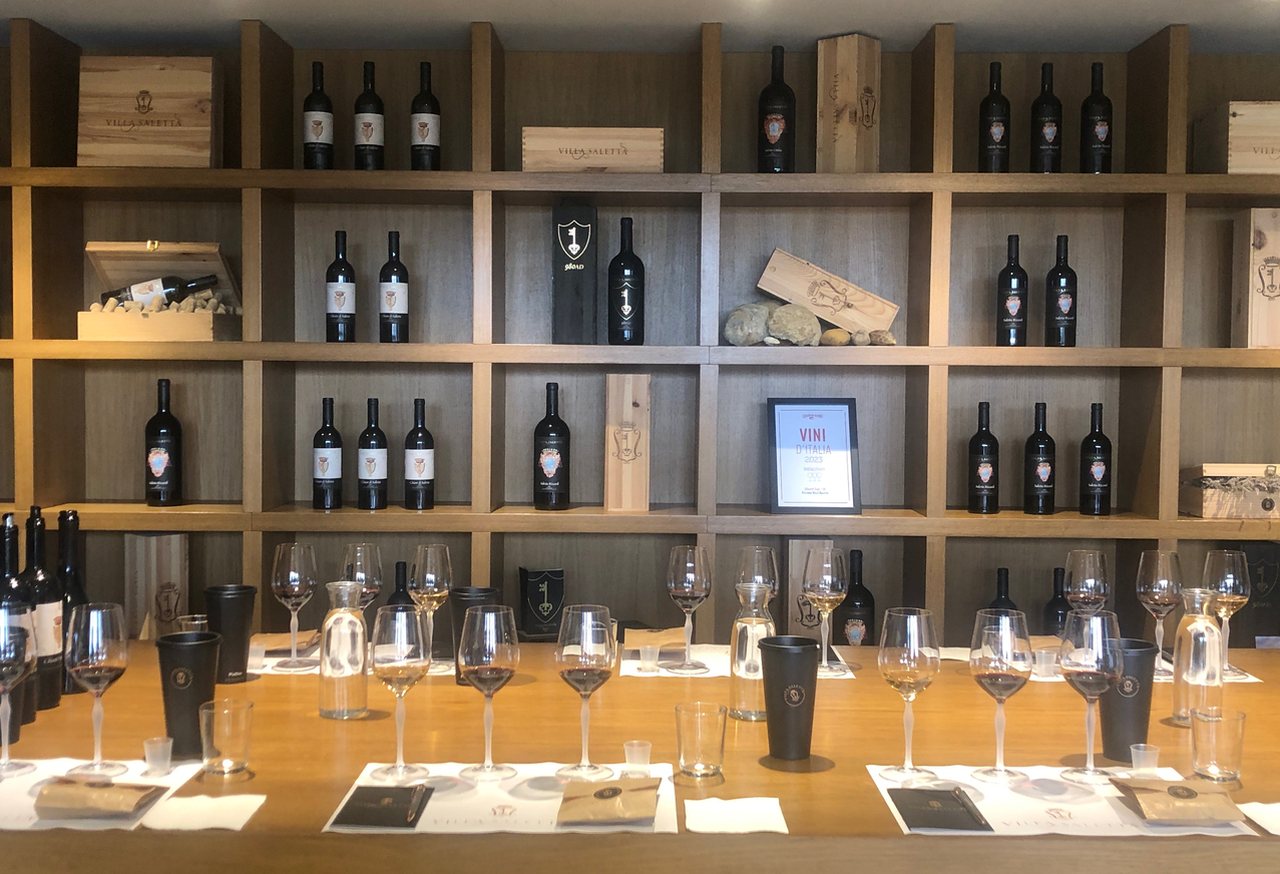
Wine tasting
Gastronomy
In this gastronomic region, there are plenty of first-class local chefs who can be hired to cook a top-quality Tuscan lunch or dinner in your villa. Those pushing out the boat could elect a different chef each evening of the week.
One of our chefs came from the Papaveri e Papere restaurant in the nearby town of San Miniato, famous for white truffles and the biggest truffle festival in the region.
There were more truffles at the very convivial Osteria del Sole, an inn in nearby Capannoli where beef reigns supreme. The tender succulent steaks went down well with a bottle of Rosso di Montalcino, the youthful sibling of the more famous Brunello di Montalcino, both coming from the timeless Tuscan hilltop town.
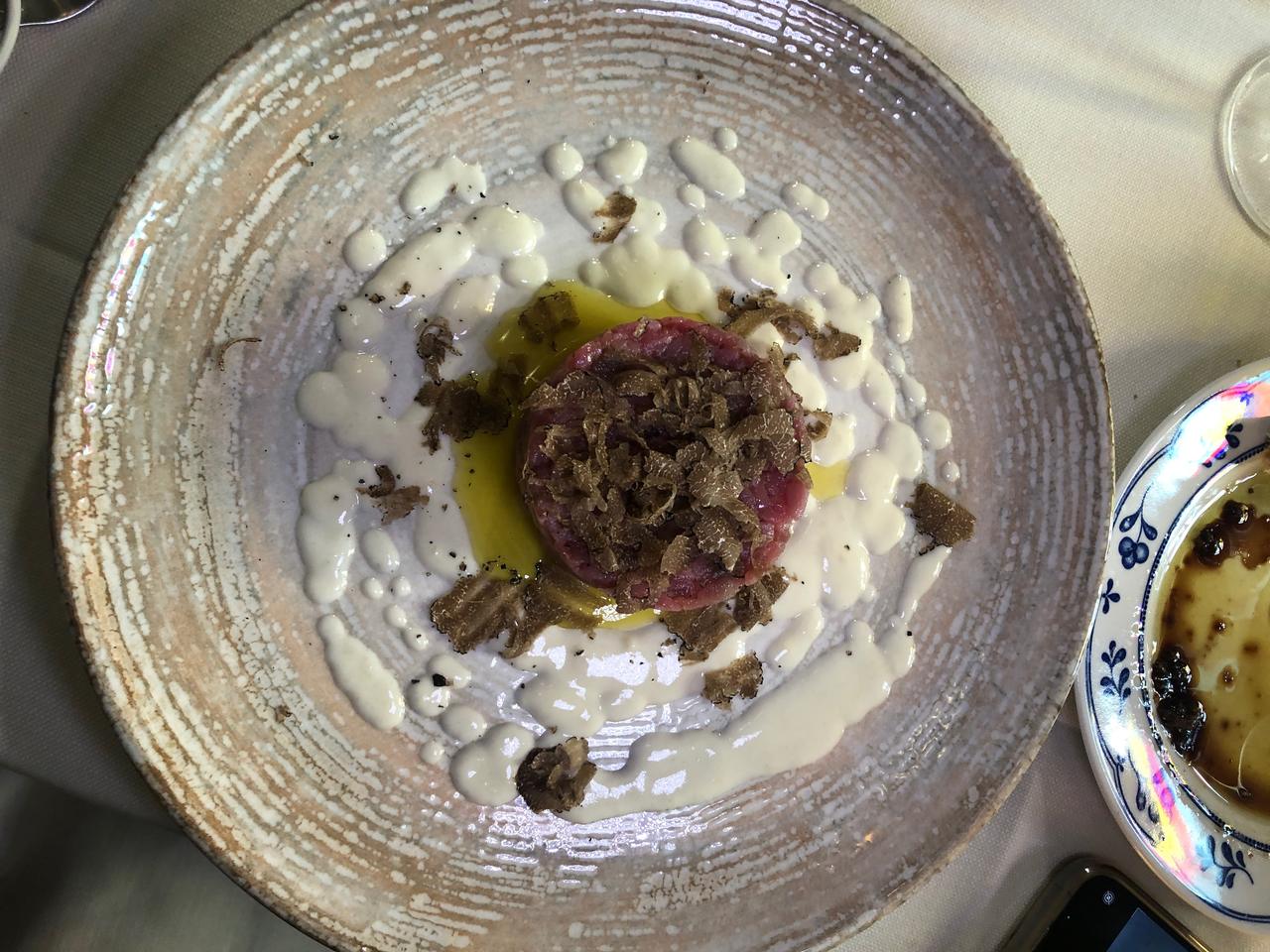
Tartare of beef fillet with parmesan cream and black truffles, Osteria del Sole
Back in the villa, it was time for our cookery class, under the supervision of delightful Erika Elia. We sat around the dining room table kneading pasta dough, then moulding it into the shape of snakes and snipping off tiny bits to create orecchiette (little ears).
Our chef was very forgiving of my sticky dough and misshapen pasta, adding it to the pot with other more perfectly fashioned ‘ears’. After preparations all afternoon, we finally tucked into the fruits of our labour: a three-course meal of Puglian pasta, Tuscan chicken cacciatore and Venetian tiramisù.
Truffle-Hunting
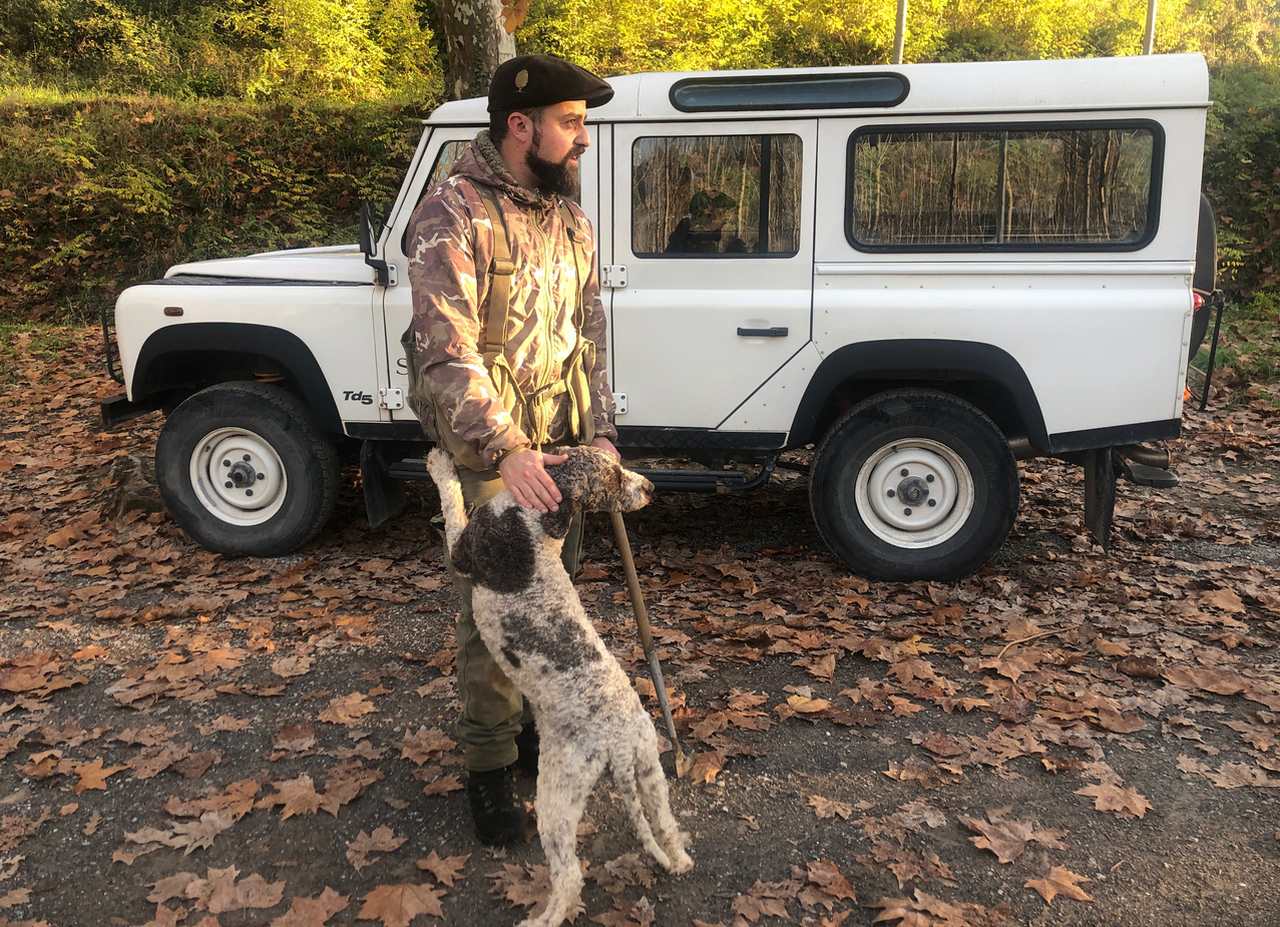
Andrea, truffle hunter c. Lucy Daltroff
The best came last. The hills around Villa Saletta are one of the rare regions of the world with a rich supply of black and white truffles (tartufi), the white being the most highly prized. These fungal tubers grow from spores living on the roots of oak, hazelnut, poplar and willow trees in certain soils and conditions.
Truffle hunters wouldn’t get far without their faithful dogs who are trained for at least four years to sniff them out. The favourite breed is the Lagotto Romagnolo, or ‘water dog’, a curly-haired, poodle-like dog which originated in the Po Delta and was used as a gundog, particularly for water-retrieving’.
No truffle experience would be complete without a taste of the precious fungi, so we sit down for lunch at Tartufi Savini and tuck into crostini with truffle-flavoured toppings, tagliatino pasta with generous shavings of white truffle, eggs with more truffle shavings and for dessert, a truffle chocolate gelato!
As we were tucking into truffle heaven, Andrea, a long-established truffle hunter appeared, camouflaged in his fatigues and brandishing a basket of the white, mud-covered beauties. The basket is to be sent post haste to Qatar, sold for a song at €12,000. The mud goes too, for once cleaned, two days of truffle life are lost.
The Savini family have been in the truffle business for four generations and today they ship them all over the world from their HQ in Montanelli, close to Villa Saletta. The Savini Tartufi outlet is a gourmet’s delight, packed with 80 truffle-infused products. It’s also full of truffle facts and figures – such as the gargantuan white truffle of 1.5 kg which was discovered in the nearby hills in 2007 and fetched a record US$330,000, which was donated to charity.
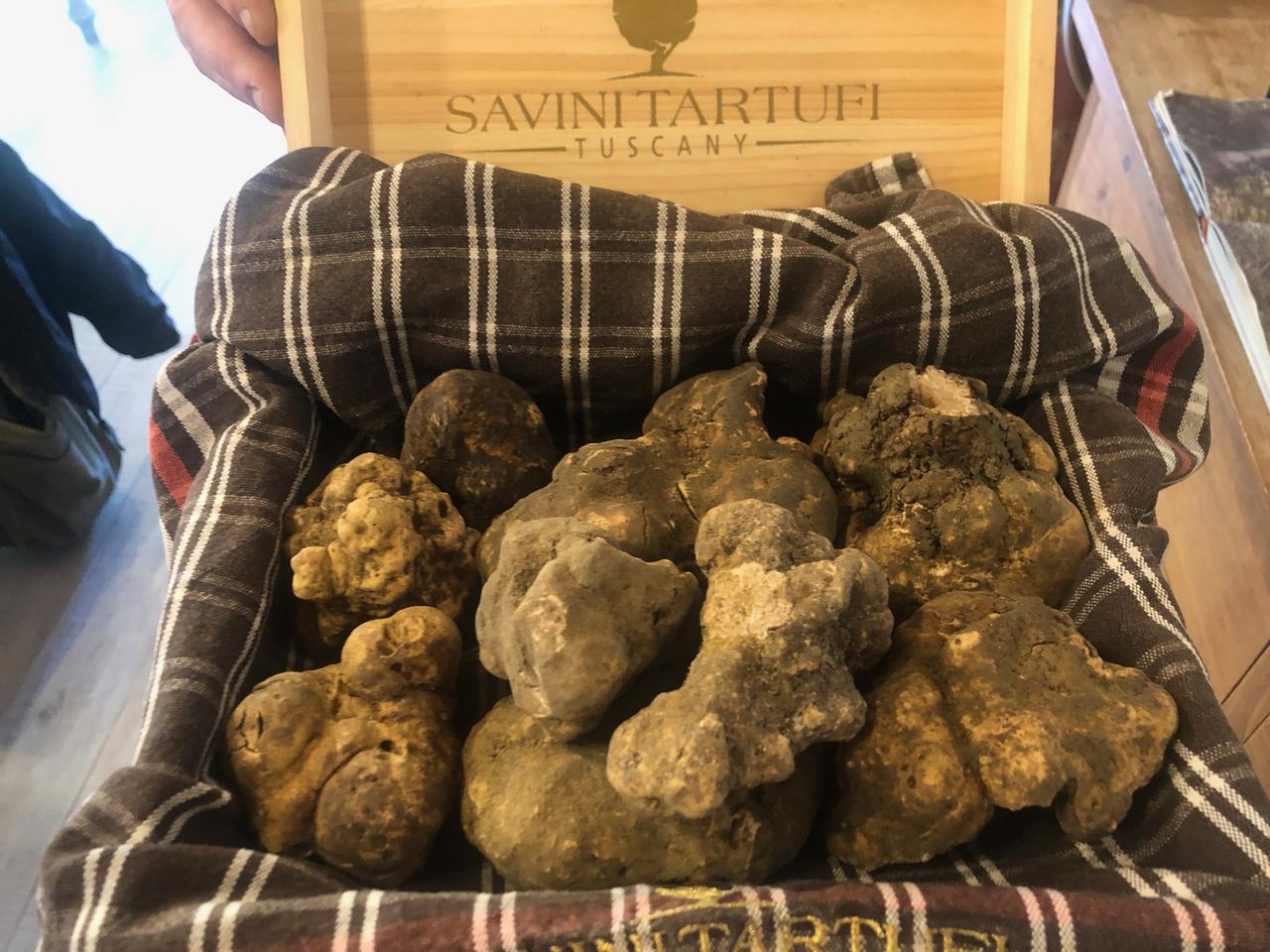
‘White Diamonds’
Sated with truffles, we are taken deep into the Saletta woods on a foraging trip by Andrea and his loveable dog, Giotto. There were no guarantees of finding any of the ‘white diamonds’, but after a few false starts, Giotto seemed very excited by the scent under a lofty oak tree and began to dig ferociously. Before he had the chance to damage the tuber, Andrea lured him away with his favourite dog biscuits and finished the job with his vanghetto tartufi, a special sharp tool which cuts through the clay.
Andrea tells us the baby truffle is worth around €200. By this stage, Giotto is only interested in another biscuit and a romp in the woods.
We head back to Fagnana, sink into sofas and dream of owning a slice of Tuscany, with vines, olive trees and a wood of white truffles.
You might also like: Masia Cabellut Villa Vineyard, Barcelona, Spain
Fact File:
Nearest airports: Pisa and Florence
How much: Casolare (3 rooms) from €3,500-€6,700 a week, Fagnana and Valle (7 rooms) €6,500-€16,000 a week, depending on the season. Minimum stay of 7 nights in high and peak season, 4 nights in low to mid-season.
More info: Villa Saletta

